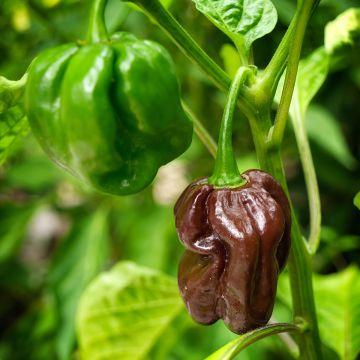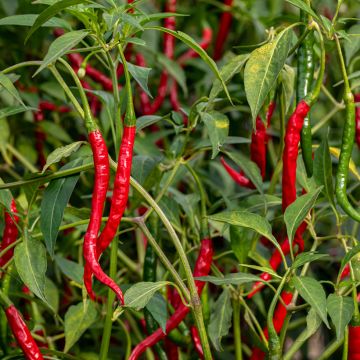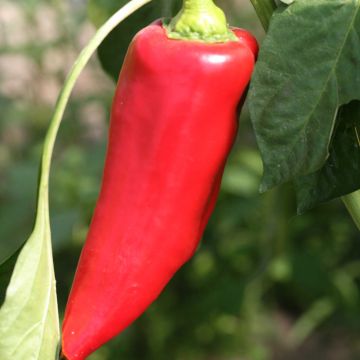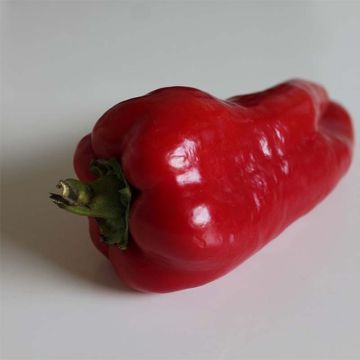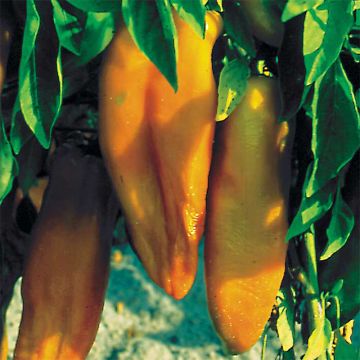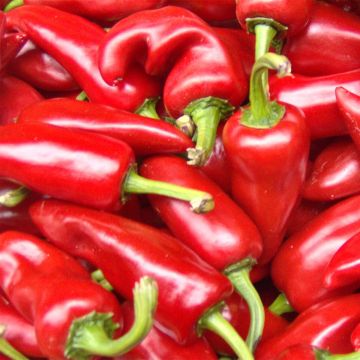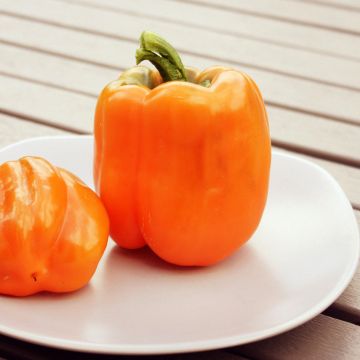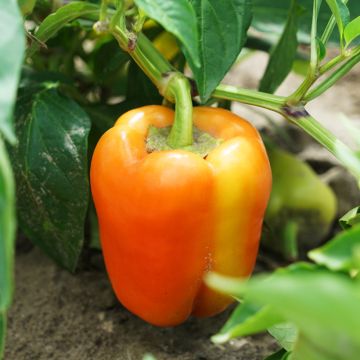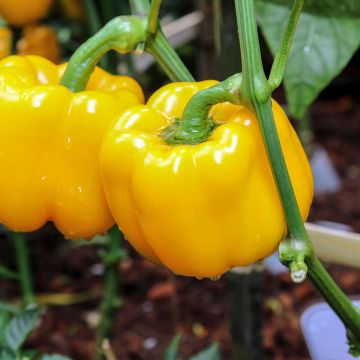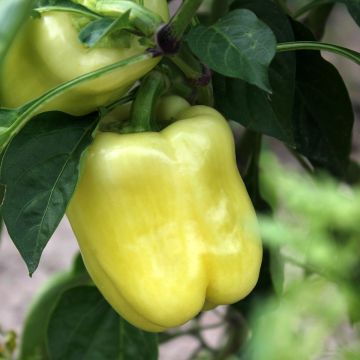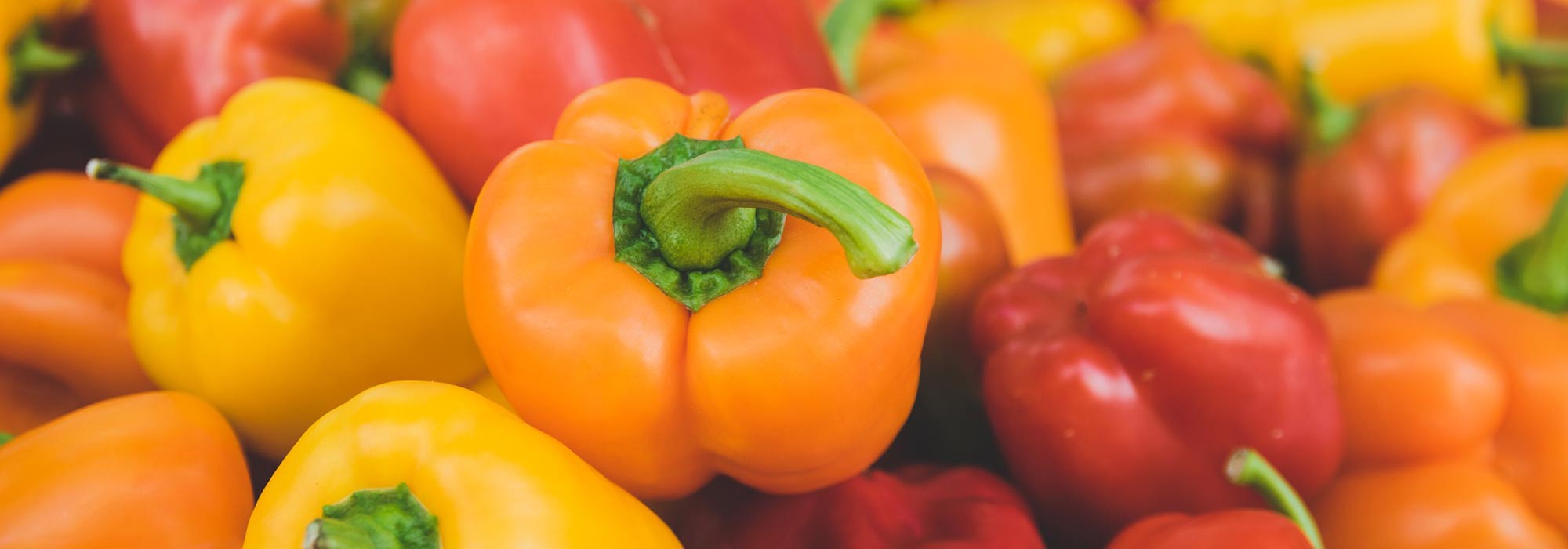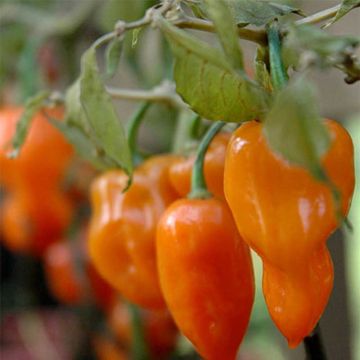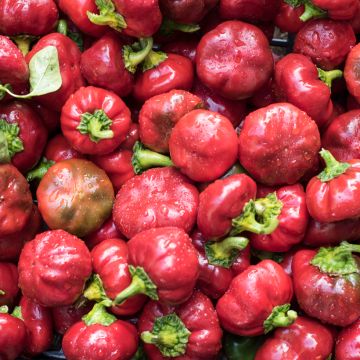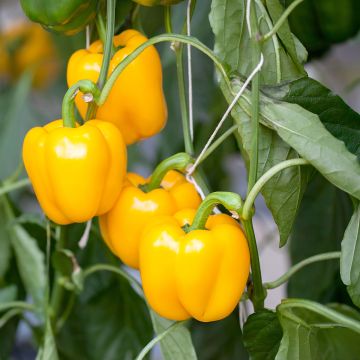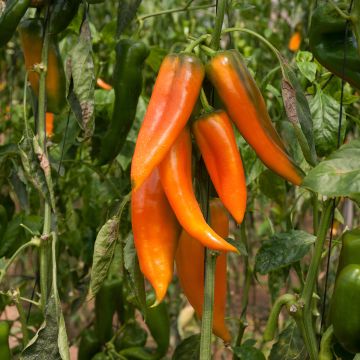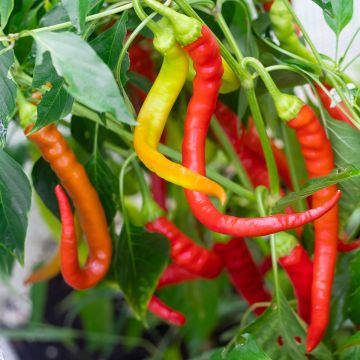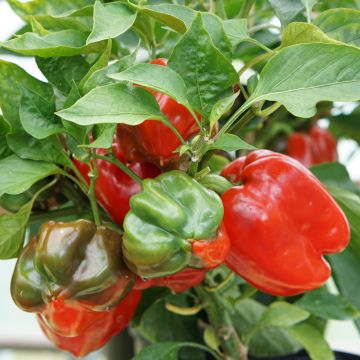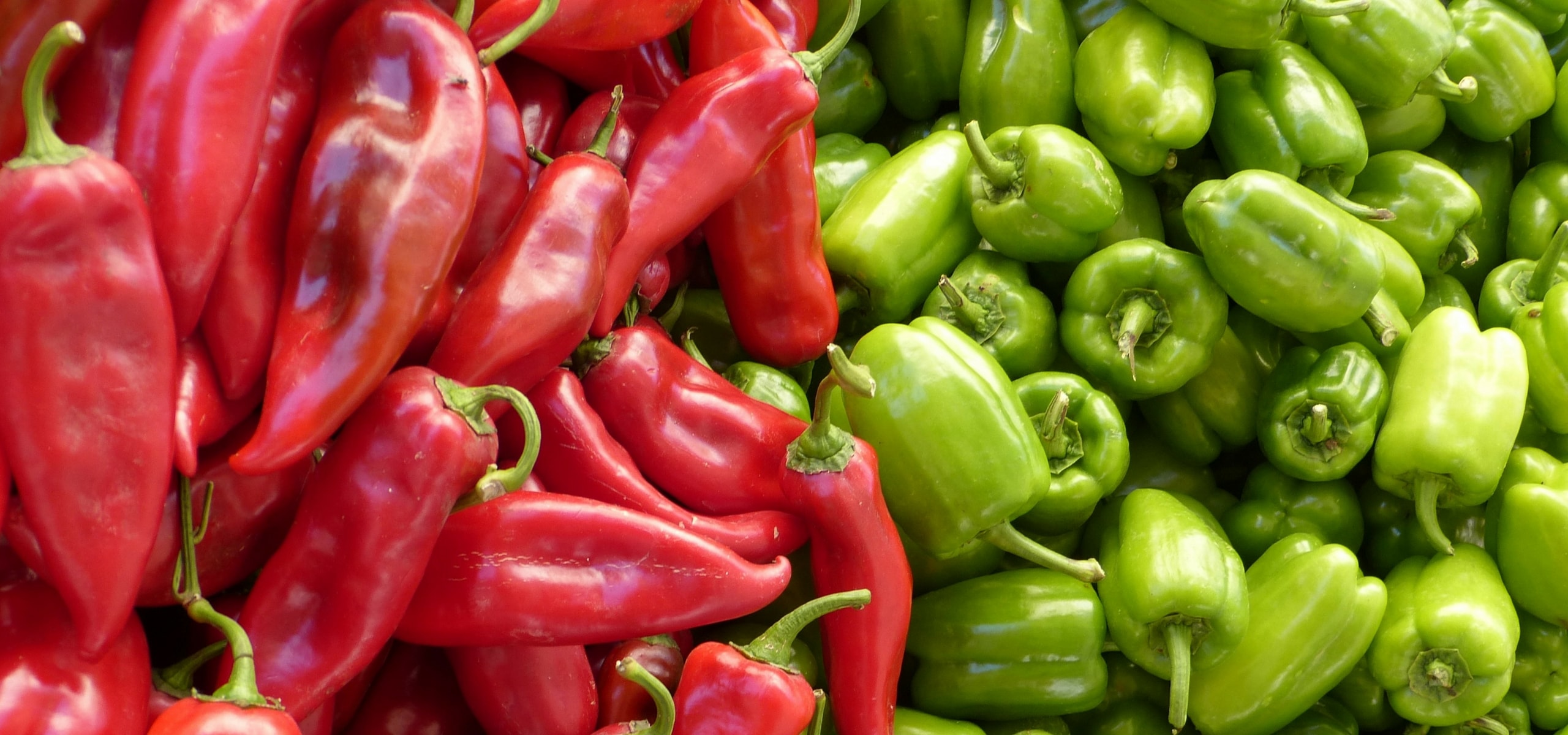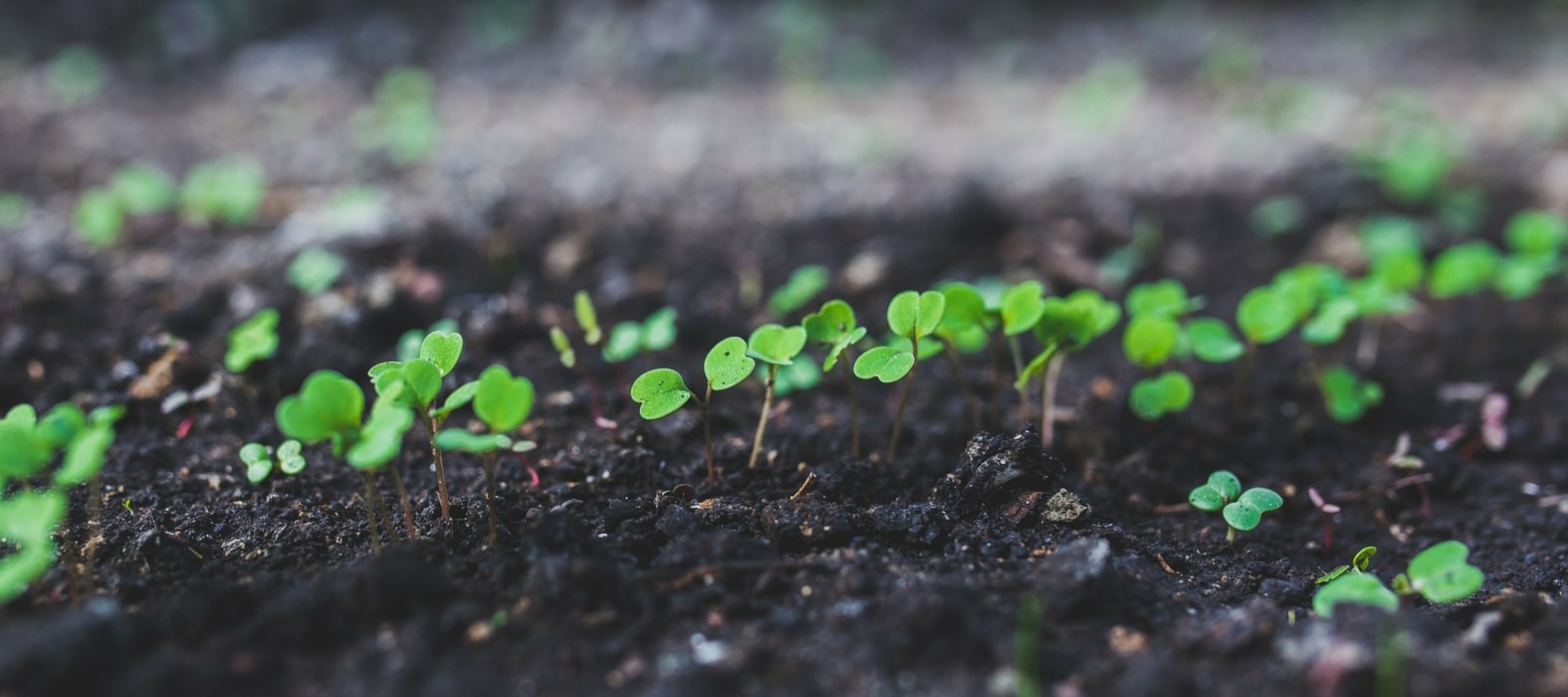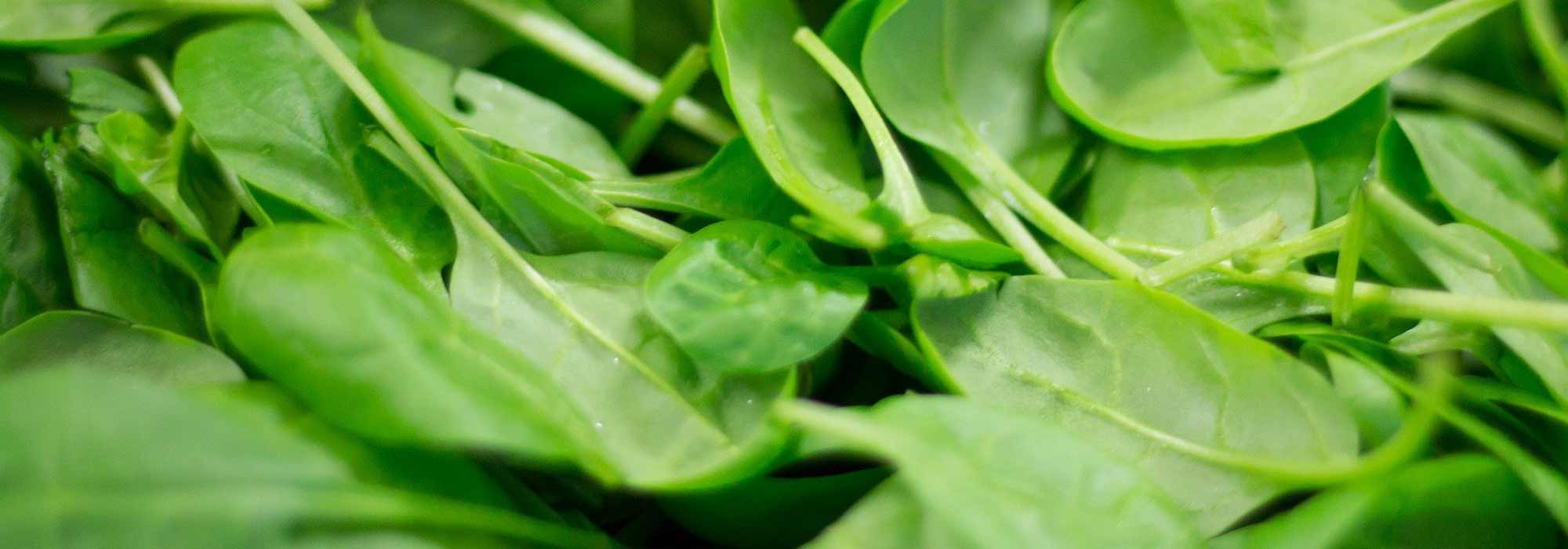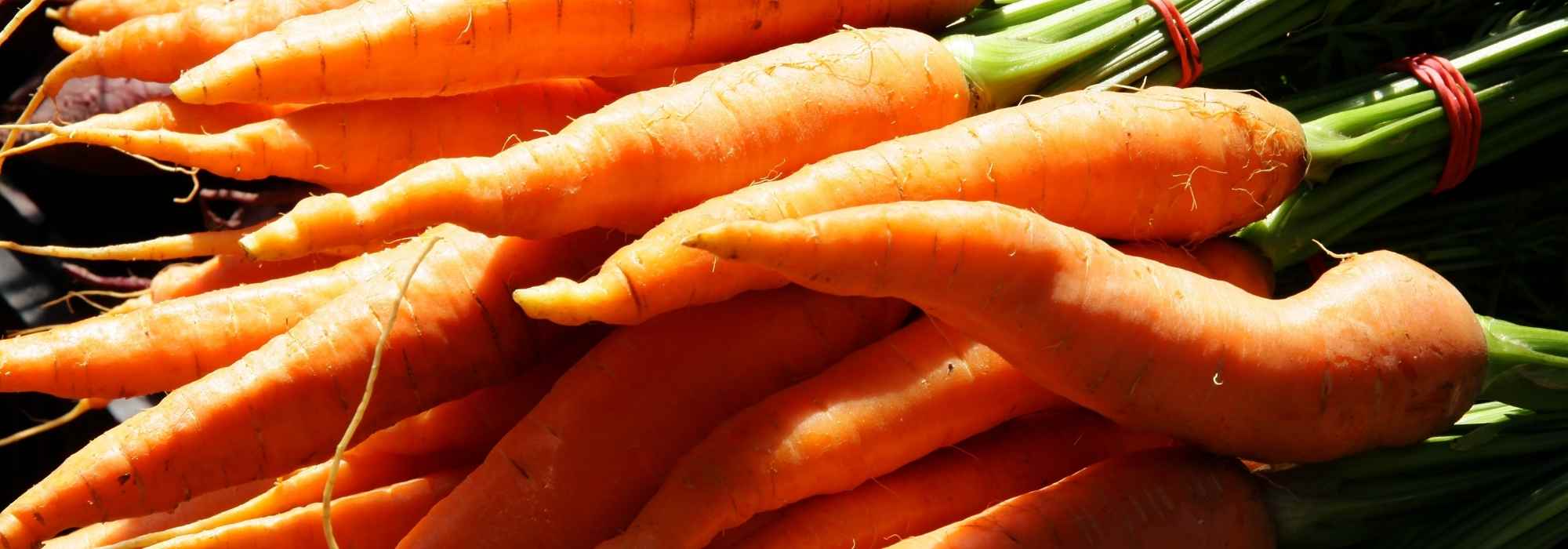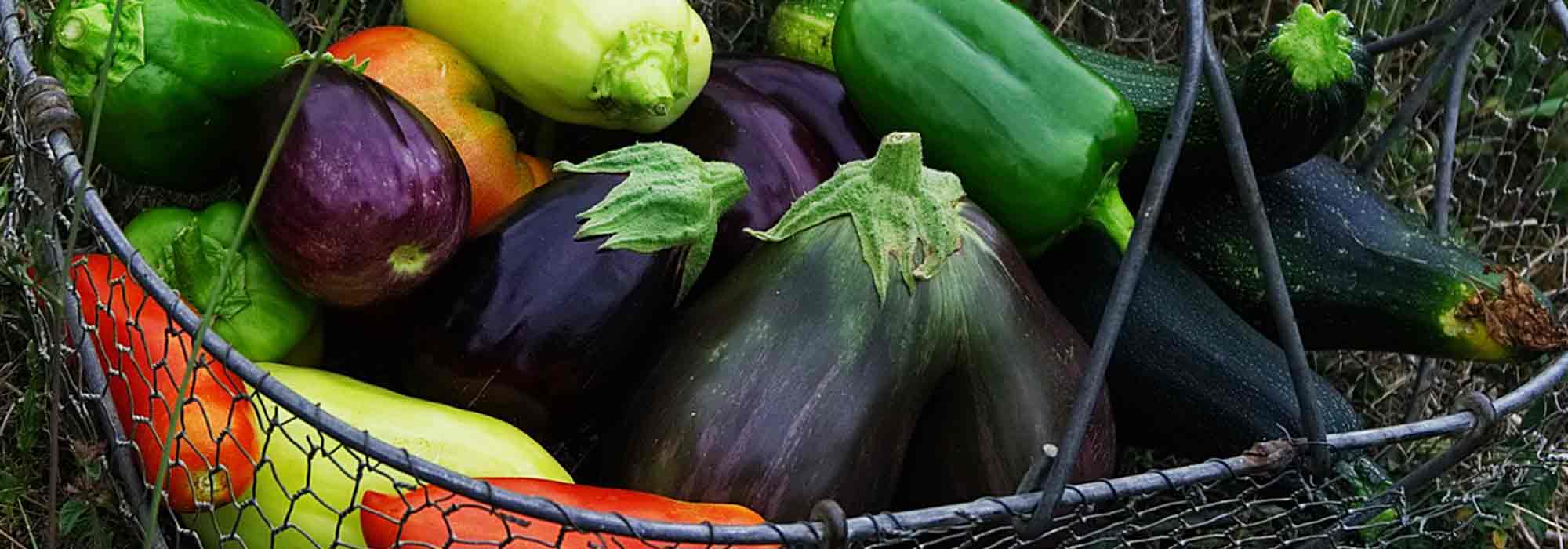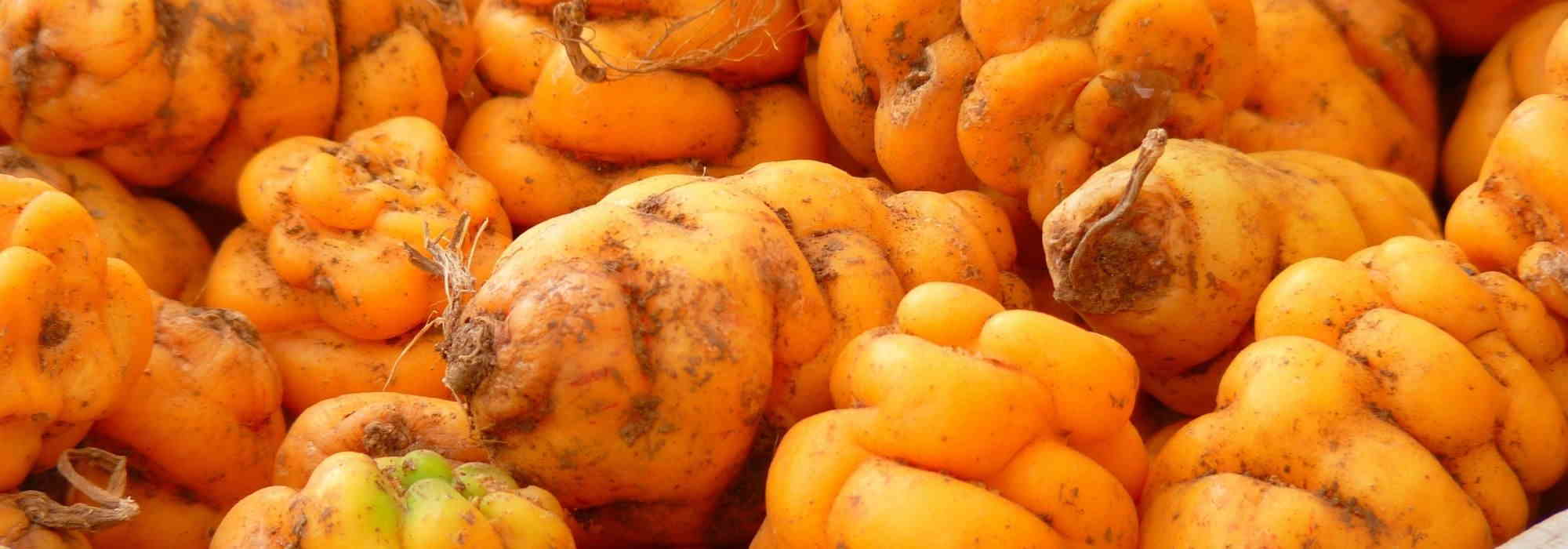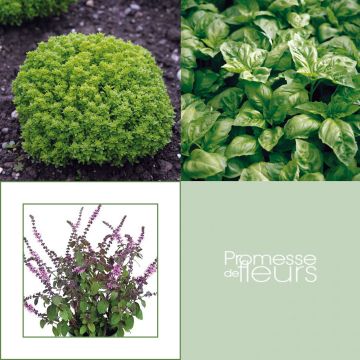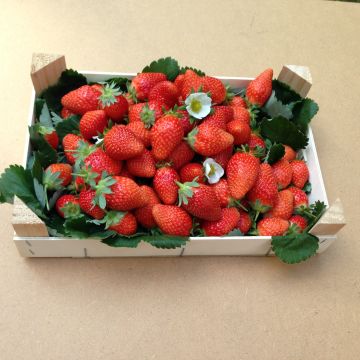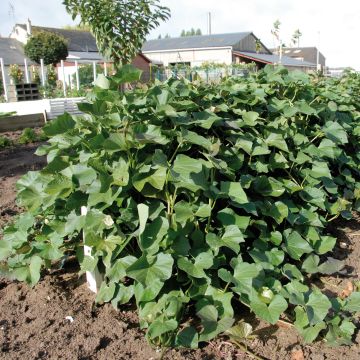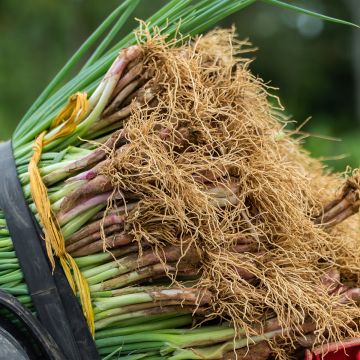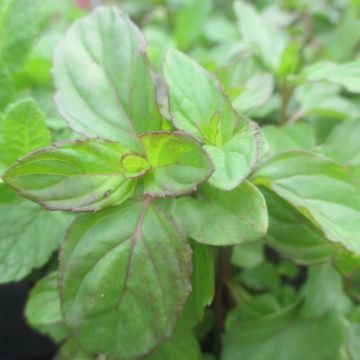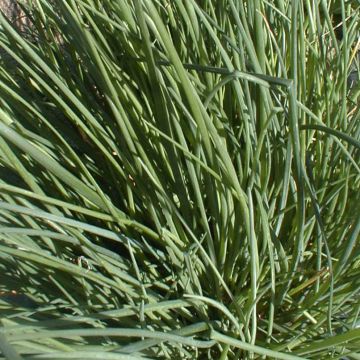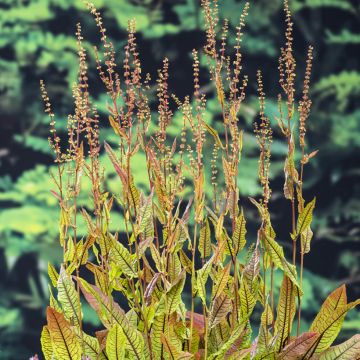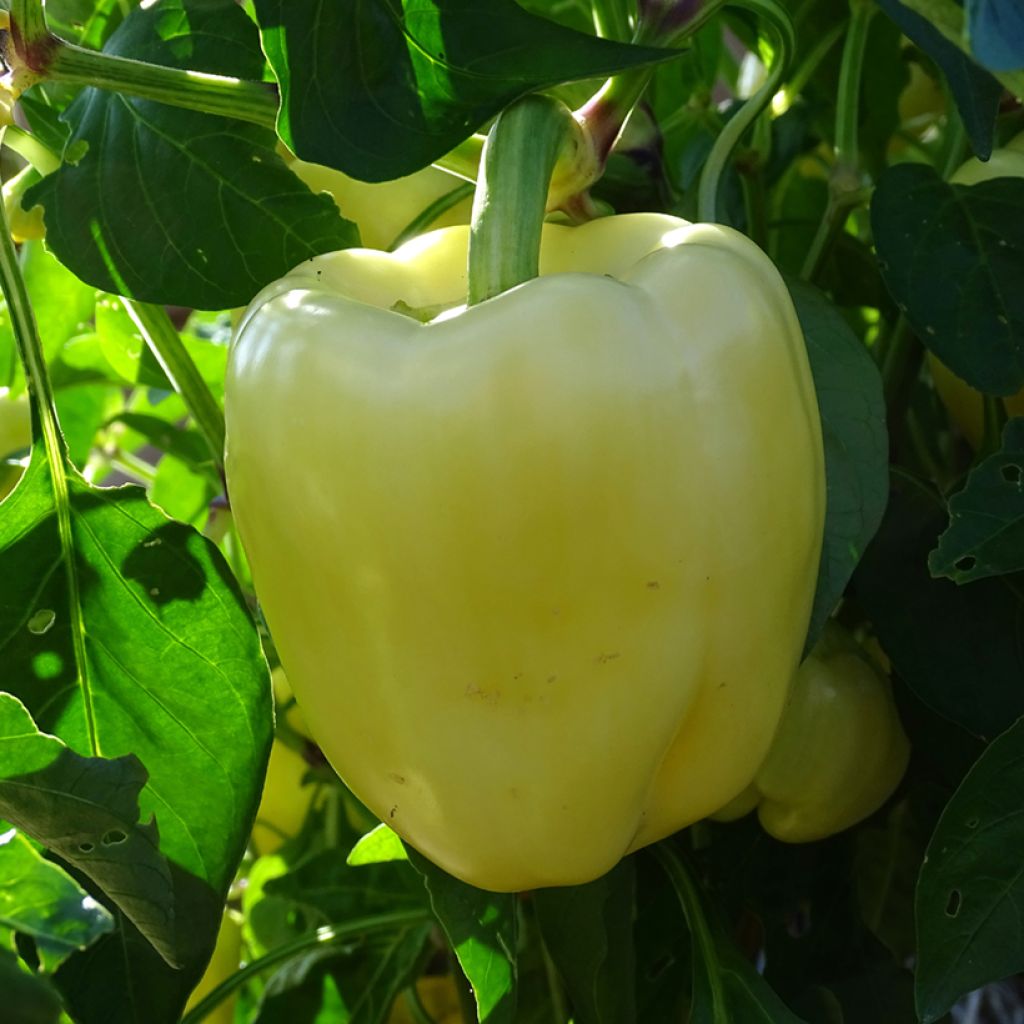

White pepper Bellkaro F1 plants - Capsicum annuum
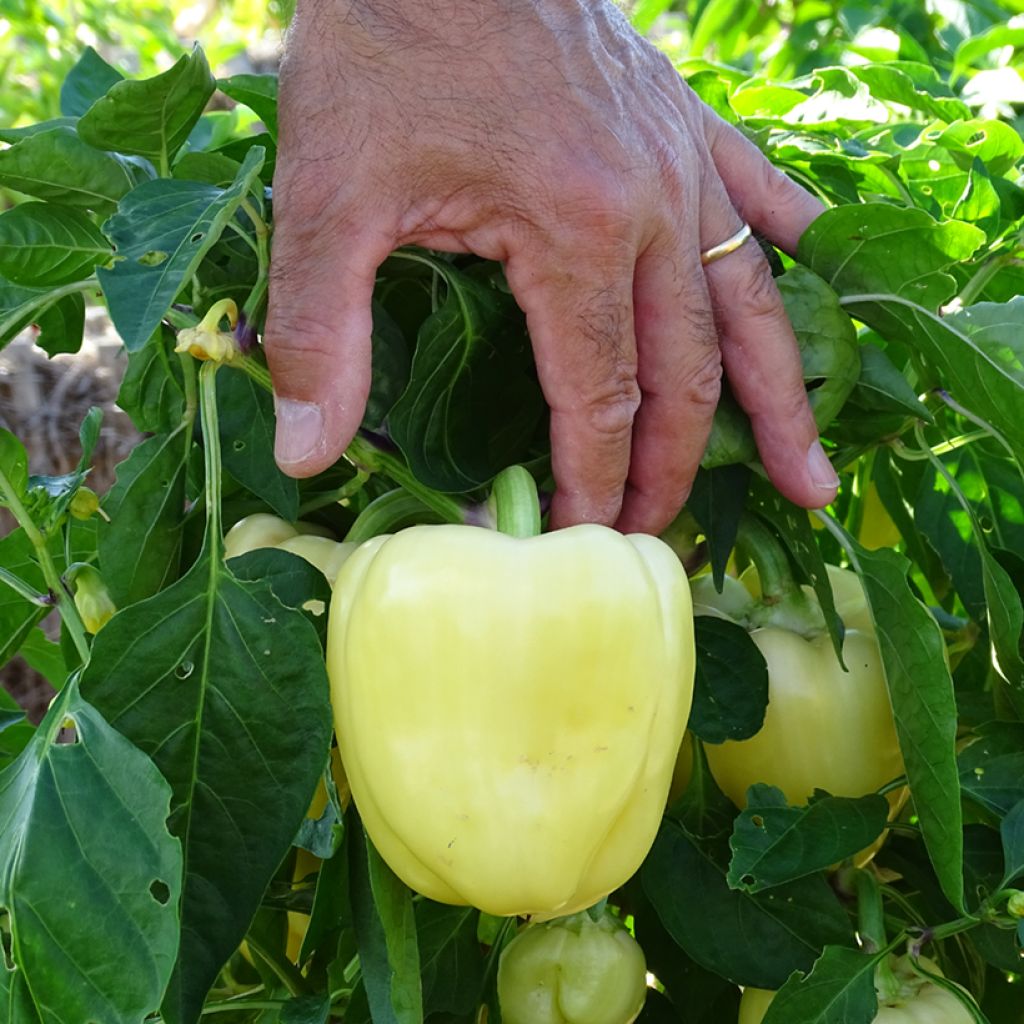

White pepper Bellkaro F1 plants - Capsicum annuum
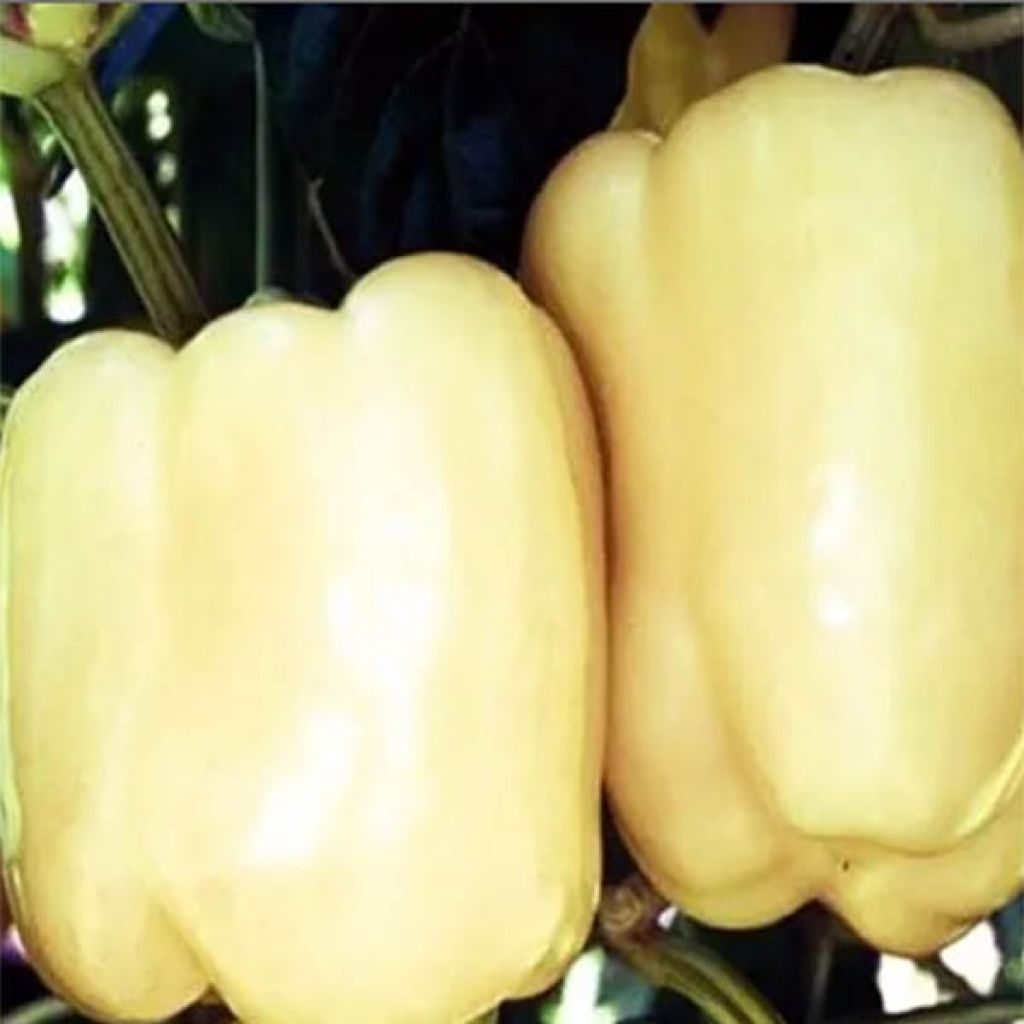

White pepper Bellkaro F1 plants - Capsicum annuum


White pepper Bellkaro F1 plants - Capsicum annuum
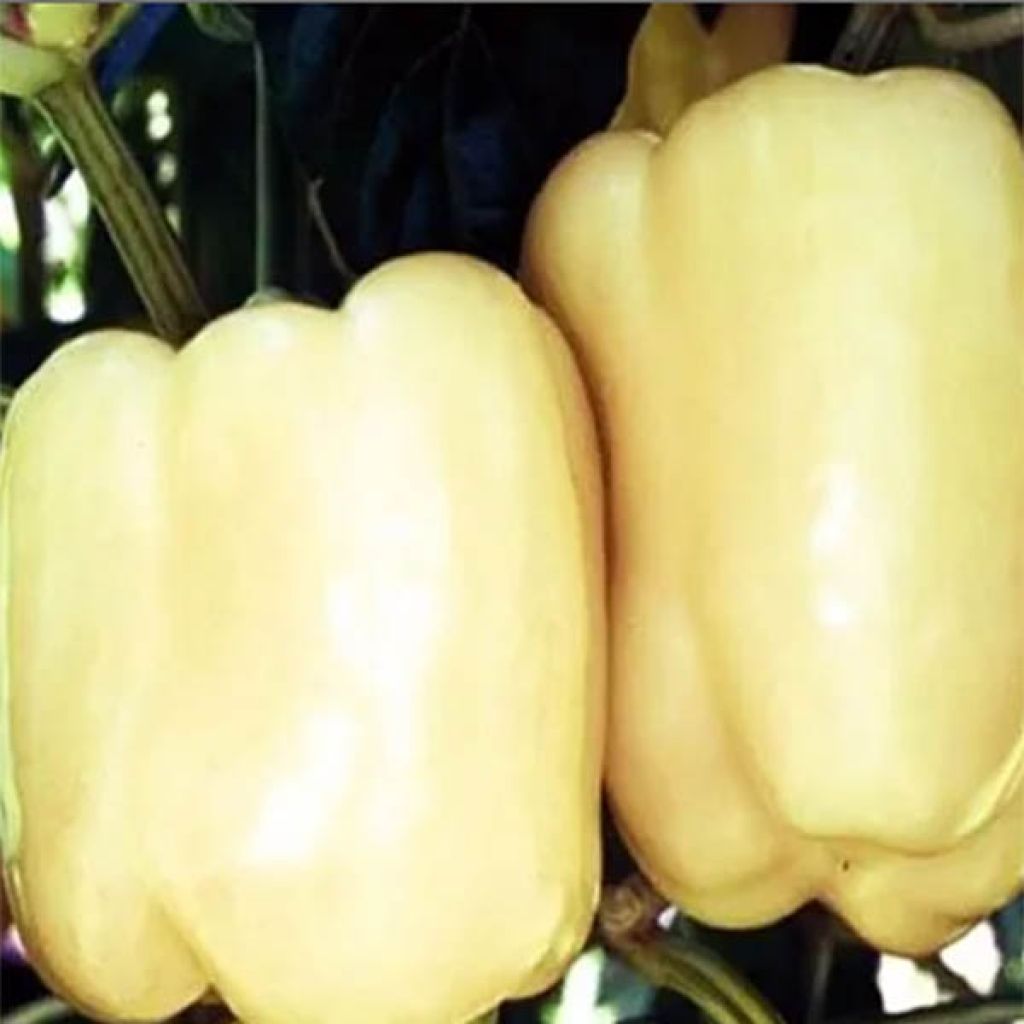

White pepper Bellkaro F1 plants - Capsicum annuum
White pepper Bellkaro F1 plants - Capsicum annuum
Capsicum annuum Bellkaro F1
Bell pepper
Special offer!
Receive a €20 voucher for any order over €90 (excluding delivery costs, credit notes, and plastic-free options)!
1- Add your favorite plants to your cart.
2- Once you have reached €90, confirm your order (you can even choose the delivery date!).
3- As soon as your order is shipped, you will receive an email containing your voucher code, valid for 3 months (90 days).
Your voucher is unique and can only be used once, for any order with a minimum value of €20, excluding delivery costs.
Can be combined with other current offers, non-divisible and non-refundable.
Why not try an alternative variety in stock?
View all →This plant carries a 6 months recovery warranty
More information
We guarantee the quality of our plants for a full growing cycle, and will replace at our expense any plant that fails to recover under normal climatic and planting conditions.

Description
The 'Bellkaro' F1 White Pepper is a hybrid variety distinguished by the ivory white colour of its fruits, which then turn beige, light yellow, and finally red. Its peppers are square-shaped, regular, fleshy, juicy, and have a very mild flavor, pleasantly sweet. They are perfect for preparing stuffed peppers or adding colour to kebabs, mixed with peppers of different colours. The plant is compact and robust, with average productivity. Being heat-demanding, the pepper requires very rich soil that remains slightly moist. The 'Bellkaro' F1 Pepper seedlings are planted from April to June, after frost, for a harvest from July-August to October.
Peppers and Chilies come from the same plant! They are successive selections that have resulted in the Bell Pepper or Capsicum, with a mild flavour, and the Chili, with a spicy flavour. The strength of Chilies is measured on the Scoville scale, ranging from 0 to 10 (0 corresponding to the Capsicum). They were introduced taken from the Americas to Europe by Christopher Columbus and quickly spread around the world. Apart from a few varieties, Peppers and Chilies are plants grown as annuals in our climates.
They belong to the Solanaceae family and are divided into five major species: Capsicum annuum (the most common), Capsicum baccatum, Capsicum chinense, Capsicum frutescens, and Capsicum pubescens.
The fruits, initially green, will take on their final colour during ripening: ivory white, red, yellow, brown, orange, purple, etc. Their shape varies: square, elongated, semi-long, etc.
Peppers and Chilies are rich in vitamins and antioxidants including capsaicin, which is responsible for the more or less burning flavour of these fruits.
In terms of cuisine, Bell Peppers and Chilies are present in many world cuisines and can be cooked in various ways. Peppers can be eaten raw or cooked, stuffed, marinated, grilled, in salads, ratatouilles, etc., while Chilies, fresh or dried, enhance and spice up dishes according to their strength.
These fruity vegetables are greedy plants, requiring very rich soil and enjoying full sun exposure.
Harvesting: Harvesting takes place from August to October (or from July for certain varieties), by cutting the peduncle with pruning shears or a knife.
Storage: Peppers and Chilies can be stored for several days in the refrigerator. They can also be frozen or dried.
Gardener's tip: We recommend mulching the soil with thin successive layers of grass clippings, if possible mixed with dead leaves. This protection, which keeps the soil moist, also reduces weed growth. You can also opt for a mineral mulch (bricks, slate, etc.) which will help accumulate heat.
Note: our young plug plants are professional products reserved for experienced gardeners: upon receipt, transplant and store them under cover (veranda, greenhouse, cold frame, etc.) at a temperature above 14°C (57.2°F) for a few weeks before being installed outdoors once the risk of frost is definitively eliminated.
Harvest
Plant habit
Foliage
Other Peppers
View all →Planting and care
Growing Bell Peppers and Chilli Peppers requires warmth. Planting is done in spring, in March-April.
First, let the plug plants grow by transplanting them into trays or pots with a diameter of 8 to 13 cm (3 to 5in), filled with compost. Place the plants in a warm and bright location. Water regularly.
In the ground: Planting in the ground is done when the soil has warmed up enough and the risk of frost has passed, around mid-May. Choose a very sunny and sheltered location. Bell Peppers and Chilli Peppers prefer very rich, light, and well-drained soil. In the previous autumn, add well-rotted compost. They should not lack water, so mulch in summer to maintain some freshness and save on watering.
Space the plants 50 cm (20in) apart in all directions. Dig a hole (3 times the volume of the plug), add well-rotted compost to the bottom of the planting hole. Place your plant with the graft point at ground level and cover with soil. Firmly press down and water.
At the beginning of the cultivation, install a removable tunnel to gain a few degrees, especially in cooler regions. Gently hoe and weed as the roots are shallow. Then, apply mulch.
In a pot: choose a pot that is at least 30 cm (12in) deep. Place a layer of gravel or clay balls at the bottom of the pot to facilitate drainage. Fill the pot with a mixture of compost and well-rotted compost. Place the plug plant and cover with soil. Firmly press down and water. Place the pot in the sun. Regularly add compost.
Install supports. Water regularly at the base of the plants.
It is advisable to pinch the Chilli Pepper and Bell Pepper plants, especially in cooler regions. When the plants have 10 to 15 fruits, cut the ends of the stems one leaf above the last fruit.
In the vegetable garden, plant flowers nearby to attract pollinating insects. In terms of crop rotation, wait 3 years before growing these Solanaceae again.
Cultivation
Care
Intended location
Planting & care advice
This item has not been reviewed yet - be the first to leave a review about it.
Similar products
Haven't found what you were looking for?
Hardiness is the lowest winter temperature a plant can endure without suffering serious damage or even dying. However, hardiness is affected by location (a sheltered area, such as a patio), protection (winter cover) and soil type (hardiness is improved by well-drained soil).

Photo Sharing Terms & Conditions
In order to encourage gardeners to interact and share their experiences, Promesse de fleurs offers various media enabling content to be uploaded onto its Site - in particular via the ‘Photo sharing’ module.
The User agrees to refrain from:
- Posting any content that is illegal, prejudicial, insulting, racist, inciteful to hatred, revisionist, contrary to public decency, that infringes on privacy or on the privacy rights of third parties, in particular the publicity rights of persons and goods, intellectual property rights, or the right to privacy.
- Submitting content on behalf of a third party;
- Impersonate the identity of a third party and/or publish any personal information about a third party;
In general, the User undertakes to refrain from any unethical behaviour.
All Content (in particular text, comments, files, images, photos, videos, creative works, etc.), which may be subject to property or intellectual property rights, image or other private rights, shall remain the property of the User, subject to the limited rights granted by the terms of the licence granted by Promesse de fleurs as stated below. Users are at liberty to publish or not to publish such Content on the Site, notably via the ‘Photo Sharing’ facility, and accept that this Content shall be made public and freely accessible, notably on the Internet.
Users further acknowledge, undertake to have ,and guarantee that they hold all necessary rights and permissions to publish such material on the Site, in particular with regard to the legislation in force pertaining to any privacy, property, intellectual property, image, or contractual rights, or rights of any other nature. By publishing such Content on the Site, Users acknowledge accepting full liability as publishers of the Content within the meaning of the law, and grant Promesse de fleurs, free of charge, an inclusive, worldwide licence for the said Content for the entire duration of its publication, including all reproduction, representation, up/downloading, displaying, performing, transmission, and storage rights.
Users also grant permission for their name to be linked to the Content and accept that this link may not always be made available.
By engaging in posting material, Users consent to their Content becoming automatically accessible on the Internet, in particular on other sites and/or blogs and/or web pages of the Promesse de fleurs site, including in particular social pages and the Promesse de fleurs catalogue.
Users may secure the removal of entrusted content free of charge by issuing a simple request via our contact form.
The flowering period indicated on our website applies to countries and regions located in USDA zone 8 (France, the United Kingdom, Ireland, the Netherlands, etc.)
It will vary according to where you live:
- In zones 9 to 10 (Italy, Spain, Greece, etc.), flowering will occur about 2 to 4 weeks earlier.
- In zones 6 to 7 (Germany, Poland, Slovenia, and lower mountainous regions), flowering will be delayed by 2 to 3 weeks.
- In zone 5 (Central Europe, Scandinavia), blooming will be delayed by 3 to 5 weeks.
In temperate climates, pruning of spring-flowering shrubs (forsythia, spireas, etc.) should be done just after flowering.
Pruning of summer-flowering shrubs (Indian Lilac, Perovskia, etc.) can be done in winter or spring.
In cold regions as well as with frost-sensitive plants, avoid pruning too early when severe frosts may still occur.
The planting period indicated on our website applies to countries and regions located in USDA zone 8 (France, United Kingdom, Ireland, Netherlands).
It will vary according to where you live:
- In Mediterranean zones (Marseille, Madrid, Milan, etc.), autumn and winter are the best planting periods.
- In continental zones (Strasbourg, Munich, Vienna, etc.), delay planting by 2 to 3 weeks in spring and bring it forward by 2 to 4 weeks in autumn.
- In mountainous regions (the Alps, Pyrenees, Carpathians, etc.), it is best to plant in late spring (May-June) or late summer (August-September).
The harvesting period indicated on our website applies to countries and regions in USDA zone 8 (France, England, Ireland, the Netherlands).
In colder areas (Scandinavia, Poland, Austria...) fruit and vegetable harvests are likely to be delayed by 3-4 weeks.
In warmer areas (Italy, Spain, Greece, etc.), harvesting will probably take place earlier, depending on weather conditions.
The sowing periods indicated on our website apply to countries and regions within USDA Zone 8 (France, UK, Ireland, Netherlands).
In colder areas (Scandinavia, Poland, Austria...), delay any outdoor sowing by 3-4 weeks, or sow under glass.
In warmer climes (Italy, Spain, Greece, etc.), bring outdoor sowing forward by a few weeks.






























